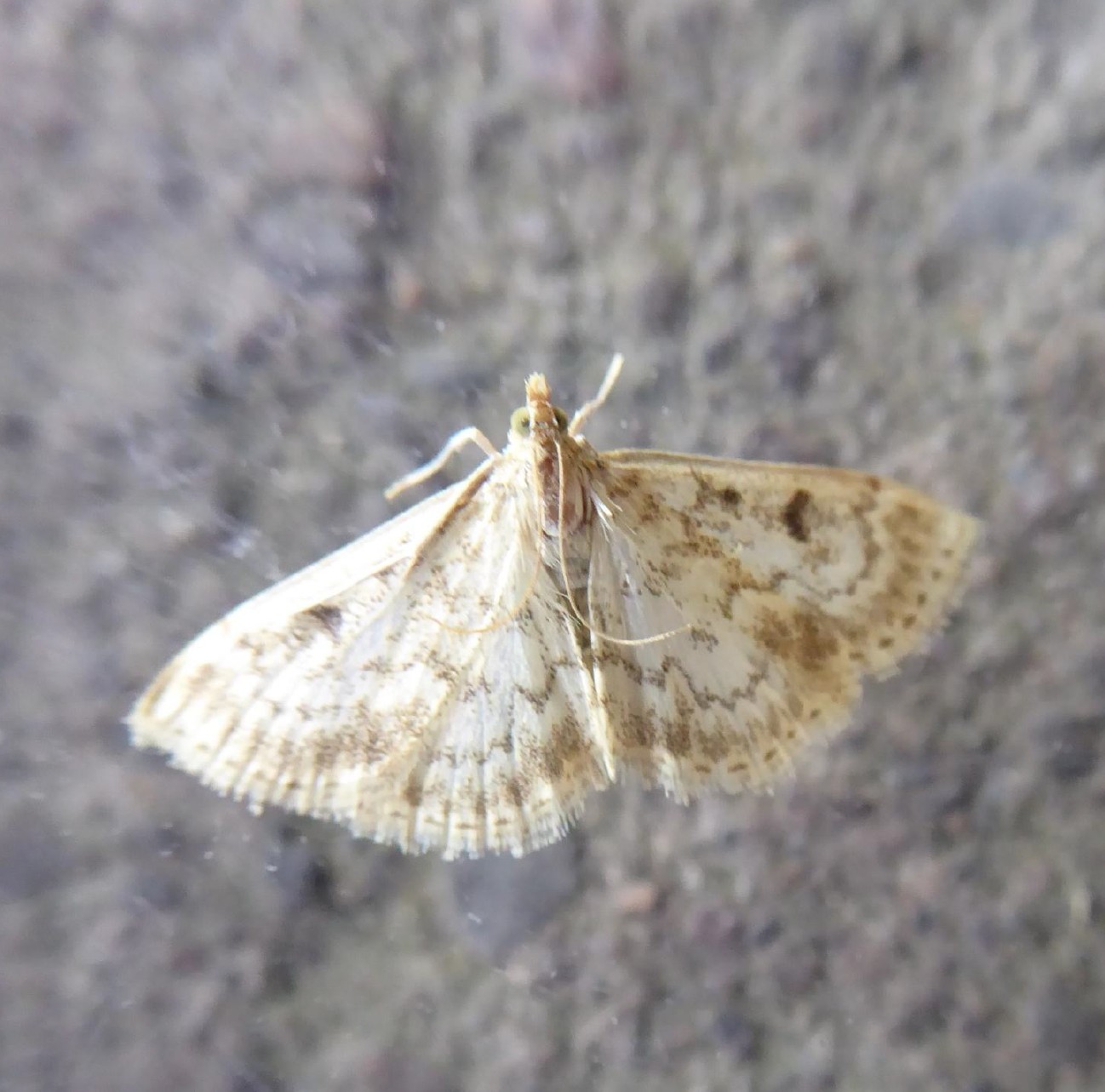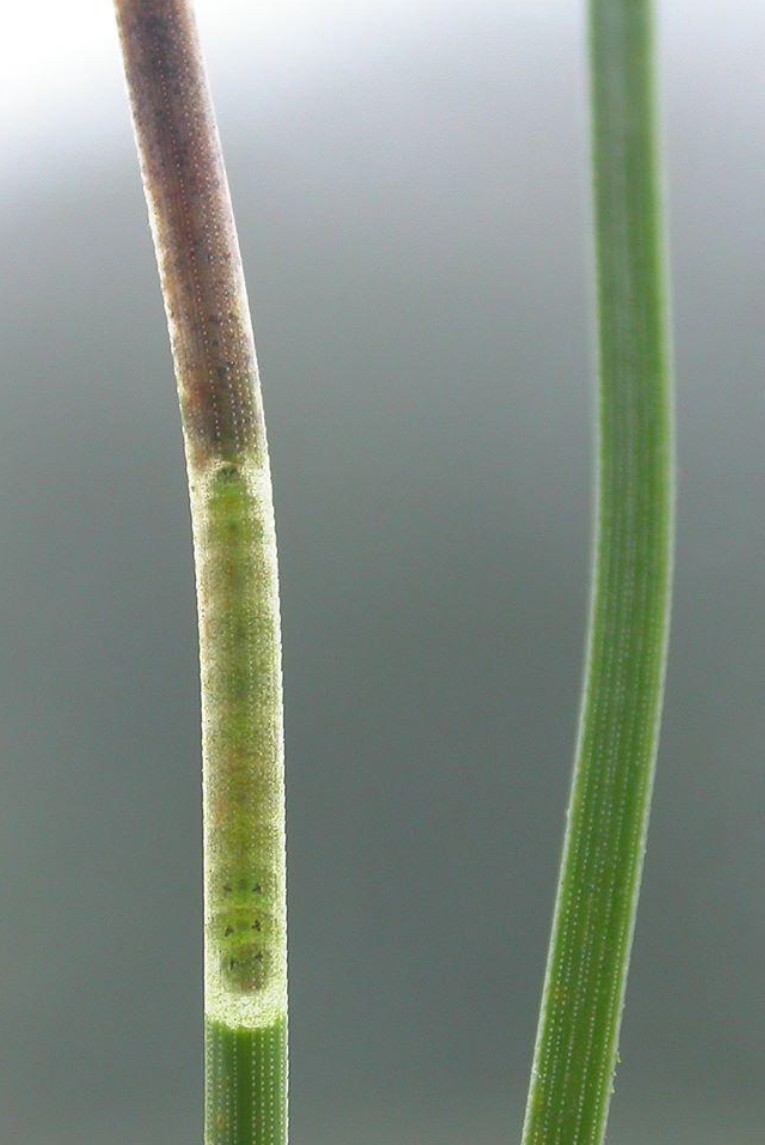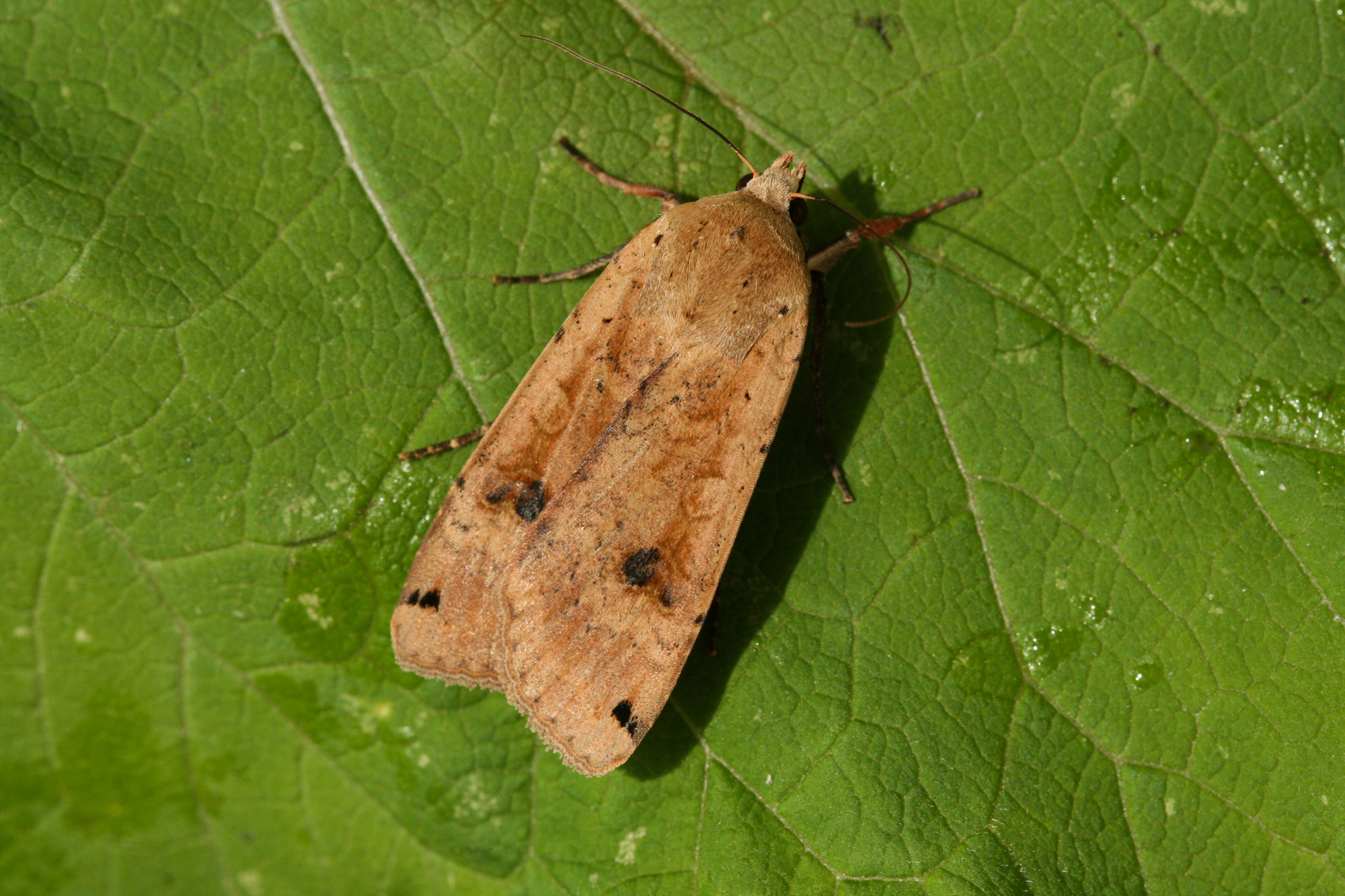Welcome to Scotland! This micro moth is one of the larger species with a wingspan of 21-23mm and is one of the ten species in the Crambid genus which includes the very familiar Small Magpie. However, the photograph above is of the first one of the Fenland Pearl to be found in Scotland and was spotted by Paul Radford in the moth trap at the RSPB reserve of Mersehead on the 25th June this year. Although similar to several other ‘pearls’, this white winged moth has a very distinct ‘jagged’ line towards the outer edge of each wing and a series of dots along the wing margin. However, the main identifying feature is the dark, crescent-shaped mark on the forewing.
The history of this European species in the UK is relatively recent with the first one found in Woodwalton Fen in Huntingdonshire in 1957. Since then it has spread and it is now seen throughout East Anglia and the south-east coast of England with scattered sightings from as far away as Cornwall and Yorkshire. The most recent record seems to be from north of Manchester so it is quite a jump to D&G!
Despite being over six decades in the UK little seems to be known about its ecology in this country. Its food plant in Europe, the cabbage thistle, doesn’t occur in the UK but it is assumed that it will be feeding on other species of thistle probably in a shelter made from binding the leaf margins together with silk in a similar way to most of its near relatives.
It is always intriguing to find a species new to D&G and to wonder what has changed to make the UK so suitable for this pretty moth. Now that it is here (assuming it is not simply a ‘stray’!) we can follow its progress in Scotland and see if we can find out some of the basics of its life history.



